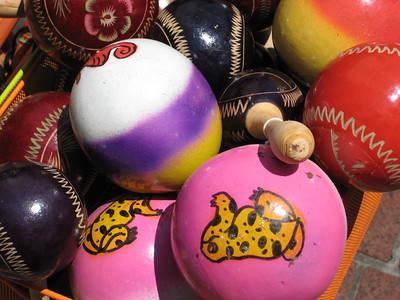Maracas in Cumbia: Symphony of Rhythm and Tradition

The Maracas, an instrument synonymous with Latin American music, holds a special place in the heart of Cumbia. Dive into the unique role of Maracas in Cumbia, tracing their historical roots, construction, playing techniques, and the mastery of renowned players who have added depth and vibrancy to this genre with their rhythmic prowess.
The Origins of Maracas
The Maracas’ journey in Latin music, particularly in Cumbia, is rich and culturally significant. Originating from indigenous tribes in Latin America, Maracas have been a staple in various musical styles. This section delves into the history and cultural importance of Maracas, highlighting their role in Cumbia’s evolution and the way they reflect the genre’s diverse roots.
- Indigenous Roots: Maracas were originally used by indigenous tribes across Latin America for ceremonial purposes, showcasing their deep cultural significance.
- African Influence: The arrival of African slaves in the Americas brought new rhythms and musical styles, which were integrated into the Maracas’ sound, enriching the Cumbia genre.
- Spanish Contribution: The Spanish colonization introduced European musical instruments and styles, which were blended with indigenous and African elements, further evolving the Maracas’ role in Latin music.
Crafting Maracas
Maracas are more than just musical instruments; they are a product of skilled craftsmanship. Made traditionally from gourds and filled with seeds or beads, each pair of Maracas has a unique sound character. Here is our insight into the artisanal process behind these rhythm-keeping instruments.
- Gourd Selection: The choice of gourd size and shape affects the volume and pitch of the Maracas. Larger gourds produce deeper sounds, while smaller ones offer higher pitches.
- Filling Materials: Seeds, beads, or pebbles used as fillings create different textures of sound. For example, seeds produce a softer, more organic sound, while beads offer a sharper, more pronounced rhythm.
- Handle Design: The length and thickness of the Maracas’ handles impact the player’s grip and control, influencing the overall playing technique and sound production.
Mastering the Maracas
Playing Maracas in Cumbia is both an art and a skill. Various techniques, from basic shaking patterns to more complex rhythms that define Cumbia’s tempo. Maracas interact with other instruments in a Cumbia ensemble, creating the genre’s signature sound.
- Basic Shaking Patterns: Simple up-and-down or side-to-side movements provide the foundational rhythm for Cumbia songs.
- Accenting Beats: Players can emphasize certain beats by shaking the Maracas more forcefully, adding dynamic variations to the music.
- Syncopation: Introducing off-beat shakes creates a more complex and engaging rhythm, characteristic of many Cumbia tracks.
Icons of the Maracas: Influential Musicians in Cumbia
The mastery of Maracas playing in Cumbia has been elevated by notable musicians such as Alfredo Gutierrez and others. We highlight the careers and contributions of these legendary Maracas players, examining how their unique styles and techniques have left a lasting impact on Cumbia music.
- Alfredo Gutierrez: Known for his virtuosic accordion skills, Gutierrez also excels in Maracas playing, incorporating rapid, intricate rhythms into his Cumbia performances.
- Aniceto Molina: Molina, another Cumbia legend, is celebrated for his energetic Maracas playing, which adds a lively, danceable quality to his music.
- Totó la Momposina: While primarily known for her singing, la Momposina’s use of Maracas in her performances adds an authentic, folkloric element to her Cumbia renditions.
Maracas in Modern Cumbia Music
As Cumbia evolved, so did the role of Maracas. Today, they are not only a rhythmic foundation but also an element of modern experimentation. Contemporary Cumbia artists are innovating with Maracas, blending traditional rhythms with modern music styles, ensuring the instrument’s relevance in the evolving music scene.
- Electronic Fusion: Modern Cumbia bands like Bomba Estéreo incorporate electronic elements with traditional Maracas playing, creating a unique, hybrid sound.
- Cross-Genre Collaboration: Artists such as Carlos Vives have collaborated with musicians from various genres, integrating Maracas into pop, rock, and even reggaeton tracks.
- Global Influence: The popularity of Cumbia has spread worldwide, with bands like Los Angeles Azules featuring Maracas in their performances, introducing the instrument to new, international audiences.
Maracas continue to be a defining element of Cumbia, enchanting audiences with their rhythmic charm. As Cumbia thrives globally, the timeless appeal of Maracas ensures their place in the heart of this vibrant musical genre.
Photo credit: Phil Whitehouse @ Flickr